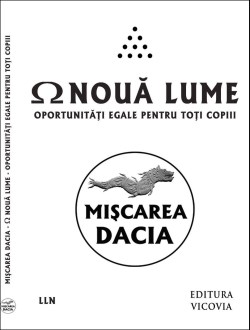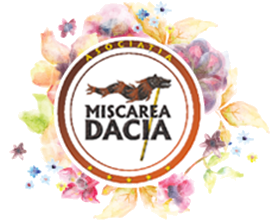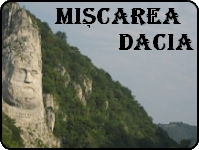 Vă invit să vă alăturaţi grupului Facebook Mişcarea DACIA, ce-şi propune un alt fel de a face politică!
Vă invit să vă alăturaţi grupului Facebook Mişcarea DACIA, ce-şi propune un alt fel de a face politică!Citiţi partea introductivă şi proiectul de Program, iar dacă vă place, veniţi cu noi !
O puteţi face clicând alături imaginea, sau acest link
Posts Tagged ‘Salonic’
Galeriu- împăratul dac al… Romei !?
OARE DE CE NU SCRIU CĂRŢILE NOASTRE DE ISTORIE NIMIC DESPRE GALERIU- ÎMPĂRATUL ROMEI, CE A DORIT SCHIMBAREA NUMELUI IMPERIULUI ROMAN ÎN… IMPERIUL DACIC ???
Cine doreşte amănunte despre DACUL GALERIUS împărat al Romei la cumpăna anilor 300 d.C. (deci mai existau daci după 300 d.C. !!!) se poate lămuri mai jos (bineînţeles din documentări din engleză, sau italiană, deoarece „istoricii lui peşte” nu au timp să ne vorbească de aşa ceva !?!?)
According to Lactantius, Galerius affirmed his Dacian identity and avowed himself the enemy of the Roman name once made emperor, even proposing that the empire should be called, not the Roman, but the Dacian Empire, much to the horror of the patricians and senators. He exhibited anti-Roman attitude as soon as he had attained the highest power, treating the Roman citizens with ruthless cruelty, like the conquerors treated the conquered, all in the name of the same treatment that the victorious Trajan had applied to the conquered Dacians, forefathers of Galerius, two centuries before.[Lactanius]
^ Lactanius, De Mortibus Persecutorum, CHAP. XXIII: „And thus did he, once a Roman emperor, but now the ravager of Italy, retire into his own territories, after having afflicted all men indiscriminately with the calamities of war. Long ago, indeed, and at the very time of his obtaining sovereign power, he had avowed himself the enemy of the Roman name; and he proposed that the empire should be called, not the Roman, but the Dacian empire.”
Acesta este Arcul din Salonic ridicat de Galeriu, unde se pot vedea „în eternitatea pietrei” dacii şi dracones, în bătăliile acestuia cu perşii.
Reţineţi că vorbin de Salonicul armânesc (şi) al călugărilor Chiril şi Metodiu !!!
— CLICAŢI PE FOTOGRAFII—
Raffigura la battaglia tra l’esercito di Galerio sul fiume (che è rappresentato da una figura nuda dalla vita in su), appoggiata su una roccia. Accanto a questa figura alcuni cavalieri daci, guidati dall’imperatore (… câţiva cavaleri daci conduşi de împărat) . Galerio, seduto sul suo cavallo, colpisce il nemico con una lancia. In mezzo ad una folla di soldati romani sono raffigurati i futuri Cesari, Costantino I e Licinio. A terra numerosi corpi dei nemici morti e feriti su entrambi i lati, sono poi poste le immagini delle dee Vittoria e Artemide.
Arcul era „poarta monumentală” pe drumul spre ceea ce trebuia să fie MAUSOLEUL lui Galerius ce azi arată ca mai jos.
Reţineţi cum se cheamă acest monument : ROTUNDA (chiar şi englezii o numesc aşa) !!!
ROTUND este dat de dicţionare ca provenind din latinul RETUNDUS, chiar dacă ăsta înseamnă… ATENUARE !?!?
Ar fi fost mai „nimerit” (punct ochit, punct lovit) să provină din sârbă, unde se zice Роунд (Round)… dar ce ne facem, că sârbii nu erau pe atunci prin zonă !?!?… păi atunci, nu înseamnă că sârbescul Роунд (Round) provine din… română ?????
… că dacă ROTUND nu e nici în latină, nici în greacă, nici în bulgară unde se zice Около (Ocolo), ci doar în sârbeşte, cine de la cine a luat domnilor „lingvişti ai lui peşte” ????
Apropos de bulgărescul Около (Ocolo) ar trebui să pricepem că şi acesta vine din românescul OCOL, care are ceva tangenţe cu ROTUND, nuuuuu ?… ei bine NU !!! … „lingviştii lui peşte” l-au atribuit … bulgarilor, că ei „au dat un ocol ca să ajungă aici” şi erau atât de civilizaţi şi purtători ai unei culturi turcice aşa de avansate, că noi i-am aşteptat în Imperiul ăla barbar de Bizantin (care se numeşte şi azi în engleză ROMANIA), ca să ne spună cum se cheamă chestia aia în ce stau animalele noastre !?!? … ha-ha-ha… dacă nu ar fi de plâns !?
Culmea este că familia cuvântului românesc OCOL ( a ocoli, ocolitor, ocolire, ocoliş) se traduce în bulgară aşa : заобикаляне на защитата, отклонение, обход, заобиколен начин… ceea ce e cu totul şi cu totul edificator în ceea ce priveşte „cine de la cine a luat” !!! … eheeee… dar ei erau mai aproape de Biserica Ortodoxă de Constantinopol, care nu iertase PAGÂNISMUL împăraţilor daci ai Imperiului (şi Galerius printre ei, alături de alţi 16 împăraţi romani născuţi între Carpaţi şi Balcani) !!!
„Felix Romuliana is a popular tourist stop on the Roman Emperors’ trail which links the birthplaces of over 17 Roman Emperors born on the territory of modern Serbia.”
Acest tip de construcţie tipic PALEOCREŞTIN ( vezi aici : http://en.wikipedia.org/wiki/Rotunda_%28architecture%29 ) şi-l atribuie cu nesimţire unii care PALEOCREŞTINI… NU AU FOST !!!
Mozaicurile acestui Mausoleu, devenit lăcaş ortodox după Constantin şi … Moschee după venirea turcilor, sunt de ACELAŞI TIP ca şi cele de la RAVENNA getului/gotului TEODORIC.
Alte amănunte pentru „curioşi” se pot avea plecând de la link-ul de mai jos şi „navigând” în link-uri colegate :
http://en.wikipedia.org/wiki/Arch_and_Tomb_of_Galerius
Din wikipedia am mai aflat următoarele informaţii (bineînţeles din materialele din alte limbi decât româna, deoarece istoricii noştri au altceva de făcut!?!?):
1. ROMULA, mama lui Galerius era PREOTEASĂ PĂGÂNĂ (necreştină) şi provenea de la nord de Dunăre.
2. ARCUL LUI GALERIU avea 8 piloni, din care au rămas în picioare doar 4.
3. Galeriu este înmormântat la FELIX ROMULIA (în cinstea mamei sale) lângă Dunăre (Gamzigrad lângă Zeicear), în plin TIMOC locuit şi azi în mare majoritate de RUMÂNI… acesta este motivul pentru care valorificarea arheologică a saitului a fost întreruptă în momentul descoperirii în 1984 a inscripţiei FELIX ROMULIANA, când s-a produs deci… „demistificarea” :
„The complex was demystified in 1984, when in the south-west an archivolt with the inscription of FELIX ROMULIANA was discovered”
„The construction started in 298 AD near the birthplace of Galerius, the site was named “Felix Romuliana” after his mother, Romula. Galerius was of Thracian and Dacian stock, descendant of tribes ruling parts of the Balkans prior to the Roman conquest in the 1st century BC.”
Aici s-a găsit şi statuia în porfir a lui Galerius:

Detalii foarte interesante despre MARELE TEMPLU de la FELIX ROMULIANA aici:
„Grand Temple
The Grand Temple dominates the south of the compound.[3] The podium in the temple and the basis of a large stairway are well preserved while the walls of the cella are only partly preserved. The remains of an altar with a narrow stairway were found in front of the temple. There is a double crypt in the podium of the temple: a wall directed towards east and west divides the crypt into two rooms with the rectangular basis. A very narrow stairway starting from the southeastern corner of the cella led to the crypt. The cella is rectangular with the antas forming a shallow vestibule.
Head of Galerius, found on the site
The walls and floor of the cella have the layer of marble plates. According to the fragments of architectonic elements, we can assume that the temple had two colonnades of columns: a higher one with the Corinthian columns and a lower one with the Ionian columns. In the very vicinity of the temple a great number of fragments of sculptures was found – they were made of white marble, the most important of which were the heads of Jupiter and Hercules (Photos 20 & 21) according to which the purpose of the temple could be defined. The founder Tetrarchius, Diocletian identified himself with Jupiter while his adopted son and co-ruler Galerius on entering the divine Jupiter family took Hercules for his patron. That’s how the tradition for the rulers to be named after Jupiter and Hercules was established as well as to celebrate the annual holiday in their honor (Ioni et Herculi) on the day when the augusti identified themselves with Jupiter and caesari with Hercules – the day which became their common and genuine birthday (geminus natalis). It is certain that the temple dominating Romuliana was dedicated to those Gods, i.e. to the cult of the rulers identified with them. It is, above all, Galerius himself who was honored as Divus Galerius after death and apotheosis.”
sursa : http://en.wikipedia.org/wiki/Gamzigrad
Este din ce în ce mai evident că istoricii noştri nu se documentează unde trebuie şi că istoria noastră multimilenară a fost falsificată pe rând de greci, romani, din nou greci, slavi, turci, iar acum de cei care ne vor dispăruţi de pe aceste meleaguri!!!
Cert e un lucru NI SE ASCUND MULTE „CHESTII”, iar „istoricii lui peşte” dorm în front , sau „s-au dat cu duşmanii” !!!













